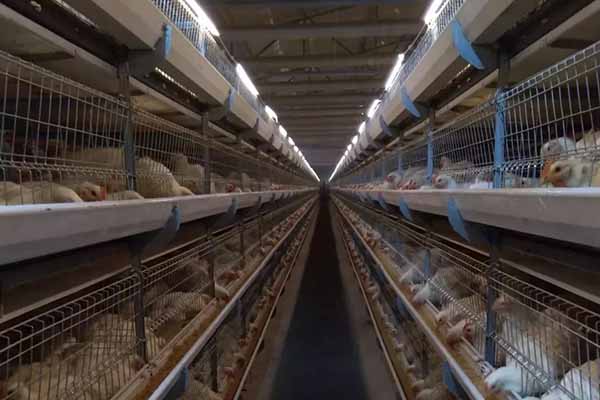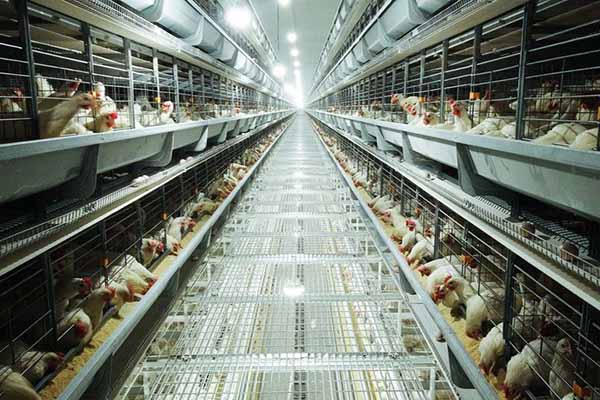How to Improve Egg Production Rate in Tanzania Chicken Farms
Time : 2025-06-26
Chicken farming has become a vital component of the agricultural sector in Tanzania, providing a significant source of income for many farmers. One of the primary goals of chicken farmers is to maximize egg production, which directly impacts their profitability. In this article, we will delve into various strategies and techniques to enhance the egg production rate in Tanzania’s chicken farms, utilizing professional poultry equipment knowledge.
Understanding Egg Production in Chickens
Egg production in chickens is influenced by several factors, including genetics, nutrition, health, and environment. To improve the egg production rate, it is crucial to address these factors systematically.
Genetics
The genetic makeup of the chicken breed plays a significant role in egg production. High-yielding breeds, such as the Leghorn, are known for their excellent egg-laying capabilities. It is essential for farmers to choose the right breed that suits their climate and farming conditions in Tanzania.

Selection of High-Yielding Breeds
When selecting chickens for egg production, consider breeds that are known for their high productivity. The Leghorn, for instance, can lay up to 300 eggs per year, making it an ideal choice for Tanzania’s chicken farms. Other breeds like the White Leghorn and the Rhode Island Red are also popular choices.
Optimizing Nutrition
Nutrition is a critical facto r in egg production. A balanced diet ensures that chickens receive all the necessary nutrients for optimal health and egg production.
r in egg production. A balanced diet ensures that chickens receive all the necessary nutrients for optimal health and egg production.
Feeding Strategies
1. Quality Feed: Use high-quality feed that meets the nutritional requirements of the chickens. The feed should be rich in protein, vitamins, and minerals. In Tanzania, locally sourced ingredients like soybean meal, corn, and cassava can be used to formulate feed.
2. Feeding Schedule: Establish a regular feeding schedule that ensures chickens have access to feed throughout the day. This can be done by dividing the daily feed into several small portions to be given at different times.
3. Water Availability: Ensure that chickens have access to clean, fresh water at all times. Adequate hydration is crucial for optimal egg production.
Health Management
Chickens that are healthy are more likely to produce more eggs. Regular health checks, vaccinations, and disease prevention are essential components of a successful chicken farm.
Health Management Practices
1. Regular Health Checks: Conduct regular health checks to identify any signs of illness early. This can help in treating diseases before they become widespread.
2. Vaccinations: Implement a vaccination program to protect chickens against common diseases such as Newcastle disease, fowl pox, and avian influenza.
3. Biosecurity Measures: Enforce strict biosecurity measures to prevent the intro duction of diseases. This includes limiting access to the farm, using clean equipment, and regularly disinfecting the chicken houses.
duction of diseases. This includes limiting access to the farm, using clean equipment, and regularly disinfecting the chicken houses.
Environmental Considerations
The environment in which chickens are raised can significantly impact their egg production. A comfortable environment can lead to higher productivity.
Environmental Improvements
1. Temperature Control: Chickens require a consistent temperature for optimal egg production. In Tanzania, where temperatures can be extreme, it is essential to have proper heating and cooling systems in place.
2. Ventilation: Good ventilation is necessary to maintain air quality and prevent respiratory diseases. Ensure that chicken houses are well-ventilated to allow fresh air to flow.
3. Lighting: Provide adequate lighting to simulate natural daylight. Proper lighting can stimulate egg production and help prevent obesity and other health issues.
Utilizing Professional Poultry Equipment
Investing in high-quality poultry equipment can significantly improve egg production rates. Here are some essential equipment to consider:
Equipment for Consideration
1. Automated Feeders and Waterers: Automated systems ensure that chickens have access to feed and water at all times, reducing the labor required for feeding and watering.
2. Egg Collection Systems: Implement an automated egg collection system to minimize the risk of eggs being broken or contaminated. This also saves time for farm workers.
3. Climate Control Systems: Use climate control systems to maintain a stable temperature and humidity in the chicken houses.
4. Ventilation Systems: Install efficient ventilation systems to ensure proper air circulation and prevent the build-up of harmful gases.
Conclusion
Improving egg production rates in Tanzania’s chicken farms requires a comprehensive approach that includes genetic selection, optimal nutrition, effective health management, and creating a favorable environment. By utilizing professional poultry equipment and implementing best practices, farmers can maximize their egg production and profitability.











